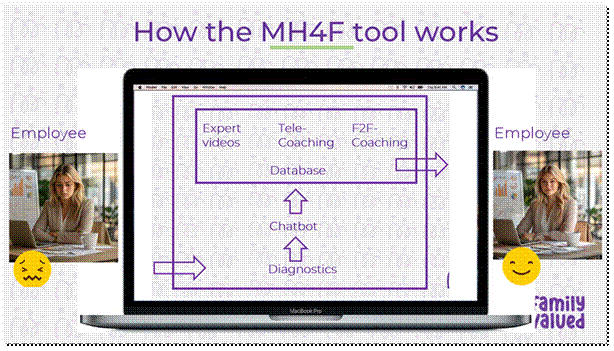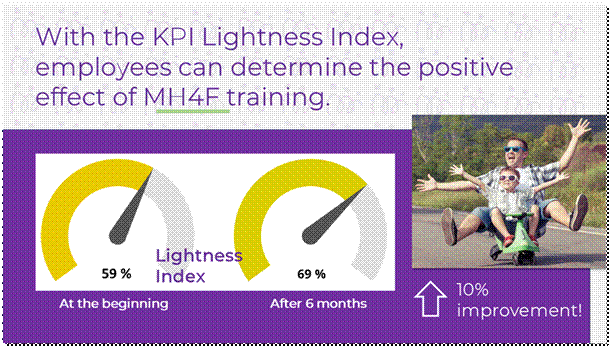The term “mental health” has changed in recent years, and now encompasses an individual’s emotional, psychological, and social health. In the past, “mental health” was often used primarily in the context of mental illnesses. This contrasts with the quote from Dr. David Satcher (1999), the then Surgeon General of the USA: “There is no (physical) health without mental health.” Meanwhile, the term no longer just describes the absence of mental illness, but rather a state of mental, emotional, and spiritual well-being in which one can fully utilise one’s own abilities – even under pressure.
The Three Pillars of Mental Health
Mental health is divided into three essential components:
- Emotional Health: The ability to recognise, express, and regulate emotions.
- Psychological Well-being: A positive self-image and the feeling of having a purpose in life.
- Social Well-being: The ability to build positive and fulfilling relationships.
Stressors: Families vs. Singles
When considering challenges, the needs of families and singles differ significantly. While for singles it is mostly about their well-being in the context of their professional activity, for families two additional aspects are added: the intra-couple relationship and the relationship with the children. Studies by Brad Wilcox (2025) and Matteo Rizzolli (2025) show that family relationships generally have a positive influence on the health of parents and children. However, it is also important to recognise that these relationships – as our small survey (J. Lask, K-M. de Molina, 2025) confirms – can sometimes lead to considerable stress.
A study by the US Surgeon General during the COVID-19 pandemic illustrates this: 48% of parents with children under 18 felt completely overwhelmed, whereas this was only the case for 26% of singles. Although this statement refers to an exceptional situation, it is indicative of the differences in stress levels. In this article, we will therefore deal with the causes of stress, their consequences, and measures to mitigate them.
Causes, Consequences, and Solutions for Psychological Stress in Families
Our project “Mental Health for Families” (MH4F) aims to identify the most important challenges for families in the area of mental health, and to offer suitable solutions.
Causes of Mental Health Strain in Families
To identify the core problems, we first created a list of 50 potential causes based on our professional expertise. This list was internally reduced to 22 attributes. We then conducted a survey among working families, based on a questionnaire with these 22 attributes. The survey results allowed us to reduce the number of relevant attributes to 16 and categorise them into three priority categories: Priority 1A, Priority 1, and Priority 2. The prioritisation of the challenges, based on the answers of the working families, is shown in Image #1.

Image #1: Results of the survey among working parents (J. Lask, K-M. de Molina, 2025)
The findings of this survey are crucial for prioritising counselling and support services for families.
Consequences of Stress for Family Life and Professional Activity
Stress on mental health is known to have a negative impact on well-being. The literature offers numerous studies on the implications and consequences for family life and daily work. Persistent stress in everyday family life, caused by overload, conflicts, or lack of communication, can lead to exhaustion, burnout, irritability, and nervousness. Physical complaints such as back pain, headaches, or depressive moods also occur frequently [1][2]. Children and adolescents, in particular, suffer from chronic family stress, which can manifest itself in psychological disorders or physical illnesses. Emotional abuse, such as the ignoring or humiliating of family members, can further exacerbate the consequences and have lifelong effects [3].
Implications of Private Stress for Professional Activity
Stress in private life directly affects work performance. Exhaustion, sleep disorders, headaches, depressive moods, and reduced productivity are common consequences. A 2021 US study shows that 76% of employees state that family stress affects their mental health and hence their work. A study by Randstad-Ifo in Germany confirms this: 44% of employees state that private stress reduces their work performance .
- Absenteeism: Mental illnesses currently account for approximately 12% of sick days in Germany, with women averaging 4.5 days and men 2.5 days, as shown in an AOK report [4].
- Productivity: Studies show that 30 to 50% of employees bring their family stress to the workplace. The Gallup company (Germany 2023) states: “Employees with high emotional stress at home are up to 2.5 times more likely to be unproductive and have a significantly higher rate of absenteeism.”
- Work Atmosphere: Family stress can weaken the work atmosphere and team cohesion, as affected individuals may withdraw or over-react.
Measures to Improve Mental Health in Families
To alleviate stress for families through the MH4F project, a systematic approach is essential. This means considering the entire network of relationships within families (see Image #2). In addition to the network shown, these relationships also include siblings and external networks such as colleagues and friends.

Image #2: Relationship network within a family. This can be significantly more extensive in a blended family or after separation/divorce.
The solutions for these stresses can be individual, familial, and professional. In this article, we focus on the individual and family measures planned in the MH4F project. A core component of these measures is “Upskilling for Parents and Children”. By upskilling, we mean the further development of soft skills and competencies.
This approach is currently applied mainly in a professional environment, and rarely in a family context. The MH4F project offers a mix of online and offline measures. These measures are partly human-based and partly AI-supported. In summary, the measures are on- and offline, individual and family-focused, using both physical experts and artificial intelligence, preventative or therapeutic.
Why such an offer?
The idea behind it is simple: families often lack the time and money for traditional counselling therapies. Hence the measures must be family-friendly in terms of price, time-commitment, and availability. This explains the necessity of offering many measures online.
Provision of Measures through the MH4F-Tool
The measures discussed are provided via an online tool, as is common in the digital age. Image #3 outlines the product portfolio, the core of which is a chatbot that takes on the role of learning companion and advisor.

Image #3: The MH4F-Tool is a browser-based application. In the account employees can find tools for flexible and individualised development.
The onboarding process in the MH4F-Tool starts with a diagnostic test to identify problems. To increase user-friendliness, this test is adaptive, focuses on essential challenges, and is therefore shorter and more empathetic. Following the test, the user receives graphical results and initial suggestions. An important value in the results is the “Ease Index”. This value is an indicator of the employee’s stress level and shows the effectiveness of the measures in the development process. An increase in the value means that the measures have been successful.
Once anonymised and aggregated this value is transmitted to the company’s HR department to inform them about the effectiveness of the measures. This is important because the company finances MH4F and provides it free of charge to employees to promote their mental health. A high Ease Index correlates with higher productivity and lower absenteeism.

Image #4: The Ease Index is an indicator of a person’s resilience to stress.
The higher the value, the lower the stress, which enables the observation of the development of the resilience.
The Chatbot: Learning Companion and Advisor
The decision to use a chatbot is strategic, because it knows the results of the diagnostic test, can answer questions and provide initial advice to the user at the beginning and throughout the development process. The chatbot is trained on expert knowledge of the MH4F team, can answer initial questions, and give simple advice. Furthermore the chatbot knows the learning library in the tool and acts as a learning companion. It guides the employee to suitable experts based on the challenges identified. The experts then provide support in one of three formats: short videos, tele-coaching, and in-person coaching. After the employee has used the formats offered (video, Tele-Coaching etc.), the chatbot contacts them with questions about progress and other concerns – similar to a human learning companion. Afterwards, it guides the employee to a further diagnostic test.
The new Ease Index value is to show whether the previous measures were effective or whether more time-consuming or costly measures such as in-person coaching are necessary. After these additional measures, a test is repeated. The Ease Index thus determined shows whether the stresses have been reduced to a tolerable level. The tool also displays development corridors for the Ease Index, so that employees know whether the respective topic can be considered “resolved”. Since the MH4F account is accessible at any time, families can use the tool at home, both together and individually. Children can also use the tool, either together with their parents or separately.
References
- https://www.aok.de/pk/magazin/familie/eltern/tipps-gegen-stress-im-familienalltag/
- https://www.libermenta.com/behandlungsfelder/stressfaktoren/stress-in-der-familie/
- https://www.dak.de/nice-vibes-healthy-vibes/gegen-stress/stress-in-der-familie-ab-wann-er-nicht-mehr-harmlos-ist_55928
- https://www.aok.de/fk/betriebliche-gesundheit/grundlagen/fehlzeiten/ueberblick-fehlzeiten-report/?utm_source=chatgpt.com

